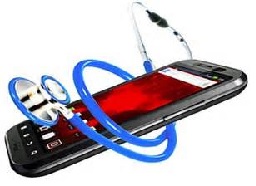Pavilion Publishing and Media Ltd
Blue Sky Offices Shoreham, 25 Cecil Pashley Way, Shoreham-by-Sea, West Sussex, BN43 5FF, UNITED KINGDOM
 When mobile phones first burst onto the scene, they were a revelation for the medical community and for everyone else as well. They allowed more mobility, flexibility and made it easier for being on call and improved availability. Healthcare professionals working both in the community and in a hospital have come to appreciate their amazing potential. As they have now become everyday items, it is easy to take them for granted, but they were revolutionary in the early years. Well as we now appreciate, technology does not stand still and moves at such a rapid pace. Many of us now have upgraded our mobile phones to smartphones. Their impact on medical practice has been just as profound and it is worthwhile taking stock of what can now be achieved from these handheld devices.
When mobile phones first burst onto the scene, they were a revelation for the medical community and for everyone else as well. They allowed more mobility, flexibility and made it easier for being on call and improved availability. Healthcare professionals working both in the community and in a hospital have come to appreciate their amazing potential. As they have now become everyday items, it is easy to take them for granted, but they were revolutionary in the early years. Well as we now appreciate, technology does not stand still and moves at such a rapid pace. Many of us now have upgraded our mobile phones to smartphones. Their impact on medical practice has been just as profound and it is worthwhile taking stock of what can now be achieved from these handheld devices.
If you want a definition for smartphone, check out another offspring of the modern digital age, Wikipedia- http://en.wikipedia.org/wiki/Smartphone for a detailed article. For me, a smartphone fuses the capabilities of a mobile phone to a potent internet capable, handheld computer. Having such a small portable yet powerful device, which can neatly nestle in your hand, gives the user access to a vast amount of resources, knowledge, processing power and data.
Translated into front line clinical practice, the impact can be enormous and in the last couple of years or so, I have had a great personal benefit from using a smartphone (in my case it was an iPhone). The basics may be obvious such as the ability to have a calendar and contacts database that syncs with my PC. This means I have a huge database of useful phone numbers, email addresses etc, which can be found easily by a simple search and easily updated. I can also quickly check my calendar on my phone. I can click the phone number directly from the contacts list and the relevant number will be automatically dialled, a simple but effective facility. However, this is only the beginning of the story as it is effectively a powerful portable computer, controlled by easy to use apps.
Using the Dropbox app, I can have a huge number of documents sitting in ‘the cloud’ and easily accessible via a 3G/4G or wifi connection. I also have other documents sitting in another cloud-based app in Evernote. Both facilities have a free and a paid for option, but the free option offers a fantastic user experience via an app or website. I have no need to use the paid for services. Most smartphones also have an onboard camera that can produce pretty decent clinical pictures, though beware of confidentiality issues and follow accepted standards and practice. I have not used the camera for clinical purposes, but often patients have showed me pictures of rashes in themselves or their children on their smartphones.
Another attribute that I have only recently become acquainted with is the excellent Google translate app that can now cope with speech. It will translate between a substantial number of languages with speech input and speech output in a variety of languages. It looks and sounds great and it is easily accessible and simple to use. These clever apps can only get better and improve both in their accuracy and user experience and maybe help when there is a language barrier between clinicians and their patients. For house calls, when I am travelling in unfamiliar areas, I turn my iPhone into a fully fledged satnav within a short time. Using the excellent Navfree satnav app, which is not only free as the name suggests but is fully functional (with a voice) and completely downloads onto my iPhone, so there is no need for an internet connection. I then clip the phone to the car air vent using the Kenu Airframe (http://www.kenu.com/products/airframe). I then input my destination and I have a great satnav system.
Another massive advantage of a smartphone is the ability to store medical textbooks. Of course you have online access, which is also great, but many reference sources and textbooks can now be fully download on the mobile device. This means that there is no need for internet access and searches and responses from the textbook app are rapid. Many traditional printed medical textbooks come bundled with web and app access and this often enhances their usefulness. There are also some good low cost or even free offerings around. For example, I have on my iPhone both the BNF and BNF for children and that is available free from https://www.nice.org.uk/about/what-we-do/nice-apps-for-smartphones-and-tablets. There are plenty of other examples out there.
It is also possible to do a video consultation with your smartphone, which could be with colleagues or with a patient. Oh and don’t forget it is also a mobile phone as well.
I suspect it will not be long before every healthcare professional will consider that a smartphone loaded with medical and useful non-medical apps should be standard issue. Perhaps that day has already arrived?



Comments are closed.